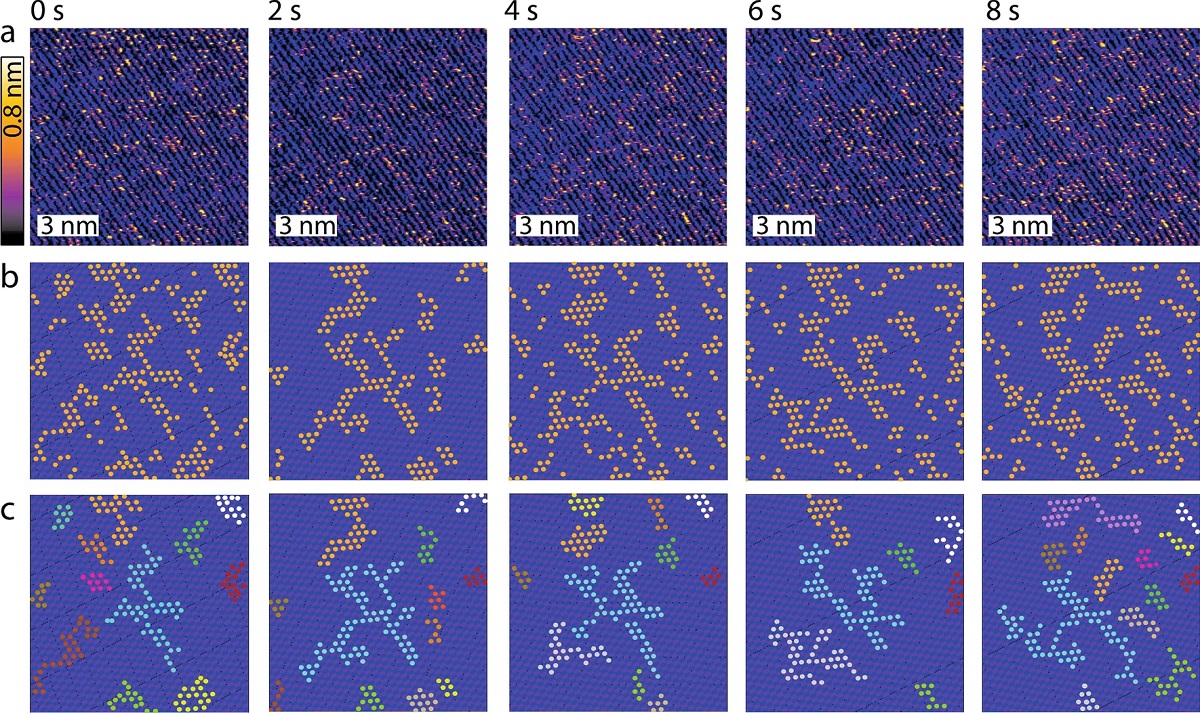HfO2-based films are important materials used in broad range of electronic applications from high-performance transistors and memory cells, to thermoelectric and energy harvesting elements. *
In the article “Impact of annealing on electric and elastic properties of 10-nm Hf0.5Zr0.5O2 films prepared on Si by sputtering” Leonid Bolotov, Shinji Migita, Ryouta Fujio, Manabu Ishimaru, Shogo Hatayama and Noriyuki Uchida described how they used scanning probe methods to make nanoscale comparison of chemical composition, surface morphology, the elastic modulus and the surface potential of bare 10-nm thick Hf0.5Zr0.5O2 films prepared on Si by a carbon-free sputtering process. *
NanoWorld conductive platinum iridium5 coated Pointprobe® EFM AFM probes were used for the electrostatic force microscopy (EFM). *
The composition mapping confirmed uniform distribution of Hf and Zr in the film along wafer size. Suppression of the monoclinic phase in films annealed at 600 – 800 °C had strong impact on spatial variations of film properties. Small surface roughness, large electric domain sizes (50–200 nm at 700 °C) and small fluctuations of the surface potential (40–50 meV) in Si coated with the films are appealing for gate-stack applications. Films annealed at 600-700 °C showed the elastic modulus of about 169 GPa and the ferroelectric polarization reversal at a field of ~1 MV/cm as observed by nanoscale poling with a Pt-coated scanning probe. In contrast, properties of films annealing at 800 °C were affected by growth of thick interfacial oxide layer. *
The nanoscale approach presented in the article is beneficial in optimizing of physical and mechanical properties of thin dielectric films. *

AFM topographs (a, c) and CPD maps (b, d) of 10 nm Hf0.5Zr0.5O2 films on Si: as-grown film (a, b), and annealed at 700 °C (c, d). Rectangular shapes in (c, d) outline one domain. Scale bars are 200 nm.
*Leonid Bolotov, Shinji Migita, Ryouta Fujio, Manabu Ishimaru, Shogo Hatayama and Noriyuki Uchida
Impact of annealing on electric and elastic properties of 10-nm Hf0.5Zr0.5O2 films prepared on Si by sputtering
Microelectronic Engineering, Volume 258, 1 April 2022, 111770
DOI: https://doi.org/10.1016/j.mee.2022.111770
Open Access The article “Impact of annealing on electric and elastic properties of 10-nm Hf0.5Zr0.5O2 films prepared on Si by sputtering” by Leonid Bolotov, Shinji Migita, Ryouta Fujio, Manabu Ishimaru, Shogo Hatayama and Noriyuki Uchida is licensed under a Creative Commons Attribution 4.0 International License, which permits use, sharing, adaptation, distribution and reproduction in any medium or format, as long as you give appropriate credit to the original author(s) and the source, provide a link to the Creative Commons license, and indicate if changes were made. The images or other third party material in this article are included in the article’s Creative Commons license, unless indicated otherwise in a credit line to the material. If material is not included in the article’s Creative Commons license and your intended use is not permitted by statutory regulation or exceeds the permitted use, you will need to obtain permission directly from the copyright holder. To view a copy of this license, visit http://creativecommons.org/licenses/by/4.0/.


